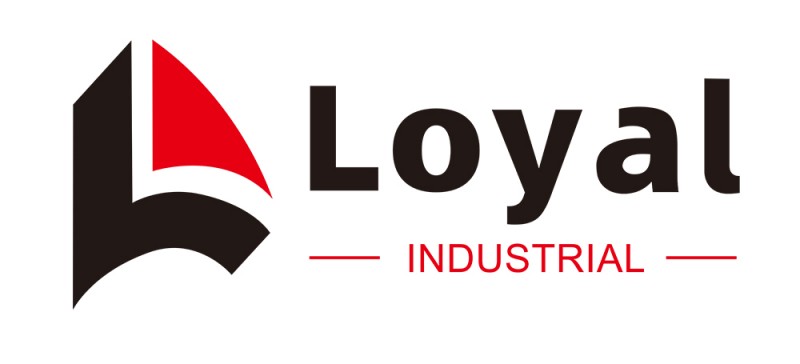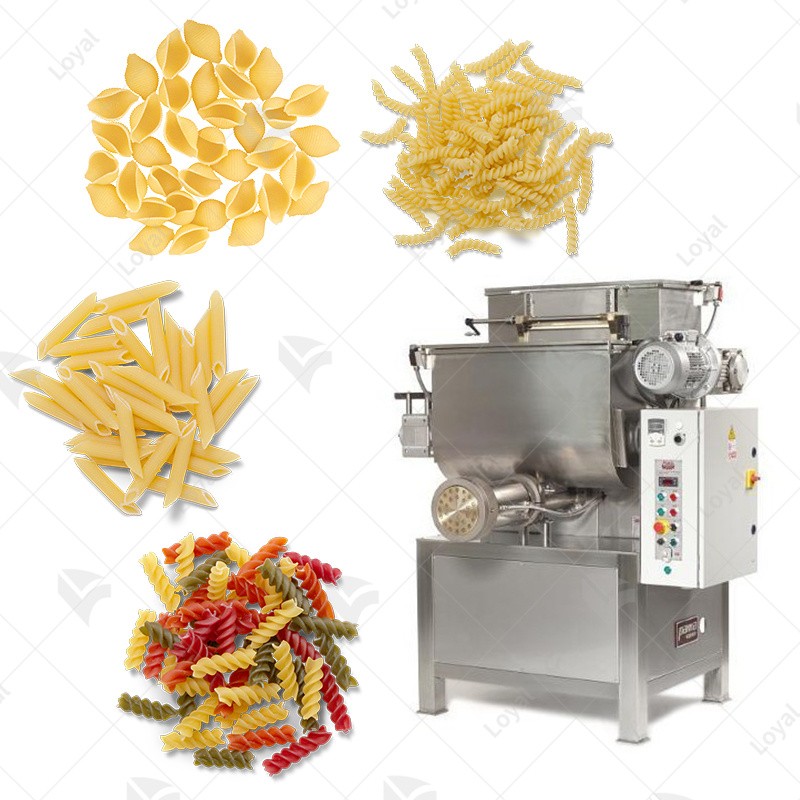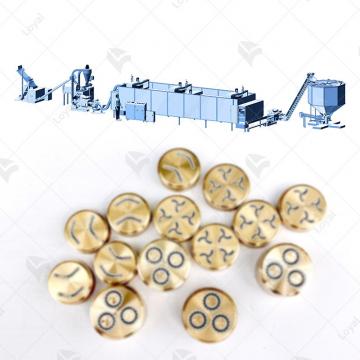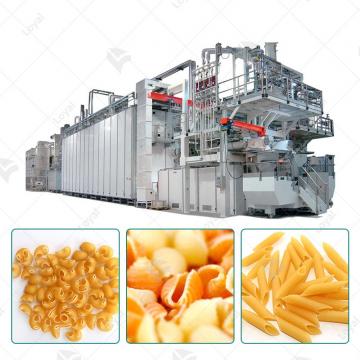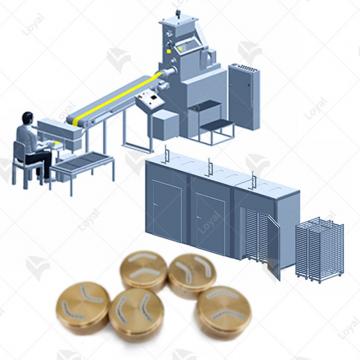Elevate Performance with Fully Automated and Energy-Efficient Pasta Production Machines
Elevate Performance with Fully Automated and Energy-Efficient Pasta Production Machines
In the realm of food machinery, the revolution brought about by fully automated and energy-efficient pasta processing equipment has significantly transformed the landscape of pasta manufacturing. This article delves into the intricate details of pasta production, highlighting the pivotal role played by automation in shaping the industry.Shandong Loyal Industrial Co., Ltd. has incorporated advanced technologies from Capitanio and HEMAKS in the production of its macaroni.
Brief Overview of Pasta Production
Pasta production, a centuries-old culinary tradition, has witnessed remarkable advancements over time. The meticulous process of crafting this beloved staple has evolved, incorporating modern technologies to meet the demands of contemporary consumers. From traditional handcrafted methods to sophisticated industrial processes, pasta production has undergone a fascinating journey.
Significance of Automation in Pasta Manufacturing
The advent of automation in pasta manufacturing has not only streamlined production processes but has also elevated the overall performance of the industry. Automation ensures precision in every step, from dough preparation to shaping and packaging, leading to consistent quality and increased production efficiency. The integration of pasta production machines has become synonymous with progress and excellence in the food manufacturing sector.

The Evolution of Pasta Production Machines
Historical Perspective
Historically, pasta production was a labor-intensive task, relying on manual craftsmanship. However, with the Industrial Revolution, the introduction of mechanical devices marked the beginning of a new era. Pasta factories embraced machinery to scale up production, catering to the growing demand. The evolution of pasta production machines mirrors the broader industrial advancements that shaped the modern world.
Technological Advancements
In recent decades, technological innovations have propelled pasta production machines into a realm of unprecedented efficiency. Advanced materials, precision engineering, and smart automation technologies have collectively revolutionized the manufacturing process. These machines now boast capabilities that not only increase production rates but also ensure the consistent quality of the final product.
Fully Automated Pasta Production Machines
Definition and Features
Fully automated pasta production machines represent the pinnacle of technological integration in the industry. These machines encompass a range of functionalities, from automated dough mixing and shaping to drying and packaging. The key features include programmable controls, real-time monitoring, and adaptive systems that respond to variations in raw materials, ensuring optimal results with minimal human intervention.
Benefits of Full Automation
The benefits of fully automated pasta production machines are multifaceted. Precision in ingredient measurements, reduced waste, and enhanced production speed contribute to cost savings. Moreover, the consistency achieved through automation ensures that every batch meets the highest quality standards, aligning with consumer expectations. The seamless integration of these machines into existing production lines results in an overall increase in operational efficiency.

Energy-Efficient Technologies in Pasta Manufacturing
Overview of Energy Consumption in the Industry
Understanding the environmental impact of industrial processes is crucial in today's eco-conscious world. Energy consumption in pasta manufacturing has historically been a concern. However, the integration of energy-efficient technologies has paved the way for sustainable practices within the industry. Evaluating and optimizing energy use has become a focal point, driven by both environmental responsibility and cost-effectiveness.
Integration of Energy-Efficient Solutions
In response to the growing emphasis on sustainability, pasta production machines now incorporate energy-efficient solutions. From state-of-the-art heating and drying mechanisms to energy recovery systems, manufacturers are actively investing in technologies that minimize the ecological footprint. This not only aligns with global environmental goals but also positions pasta production as a responsible and forward-thinking industry.
Case Studies: Successful Implementations
Companies Embracing Fully Automated and Energy-Efficient Systems
Leading the charge in adopting fully automated and energy-efficient pasta production machines are renowned brands like La Molisana, Banza, Colavita, Garofalo, and Whole Foods 365 Everyday Value. These companies have recognized the importance of staying ahead in technology adoption to ensure the highest quality products while minimizing their environmental impact.
Performance Metrics and Improvements
Case studies on these industry leaders reveal remarkable improvements in performance metrics. Increased production output, reduced energy consumption, and enhanced product consistency are common outcomes of embracing advanced pasta production technologies. These success stories serve as benchmarks for other manufacturers, inspiring them to follow suit in the pursuit of excellence.
Future Trends and Innovations
Emerging Technologies in Pasta Production
As technology continues to evolve, the future of pasta production machines holds exciting possibilities. Emerging technologies such as artificial intelligence and data analytics are poised to further refine and optimize the manufacturing process. Predictive maintenance, adaptive processing, and even more energy-efficient solutions are on the horizon, promising a new era of innovation in pasta manufacturing.
Sustainability in Pasta Manufacturing
Sustainability will remain a key focus in the future of pasta manufacturing. From sourcing raw materials responsibly to implementing circular economy principles, manufacturers are expected to adopt holistic sustainability practices. This shift towards a greener approach not only meets consumer expectations but also positions the industry as a responsible contributor to a sustainable future.
Conclusion
In conclusion, the integration of fully automated and energy-efficient pasta production machines marks a transformative phase in the industry. From historical craftsmanship to cutting-edge technology, pasta production has come a long way. The commitment to precision, efficiency, and sustainability ensures that the industry continues to elevate its performance, meeting the demands of a dynamic and conscientious consumer base.

FAQs: Frequently Asked Questions about Pasta Production Machines
Curious minds often seek clarity on the intricacies of pasta production machines. Here, we address common queries to provide a comprehensive understanding of this advanced technology.
1. What sets fully automated pasta production machines apart?
Fully automated pasta production machines distinguish themselves by their ability to perform the entire pasta manufacturing process with minimal human intervention. These machines boast programmable controls, real-time monitoring, and adaptive systems, ensuring precision, consistency, and high production efficiency.
2. How do energy-efficient technologies contribute to sustainable pasta manufacturing?
Energy-efficient technologies in pasta production machines contribute to sustainability by minimizing energy consumption and reducing environmental impact. Integrated solutions, such as efficient heating and energy recovery systems, align with global environmental goals, making pasta manufacturing a more responsible and eco-friendly industry.
3. Can smaller pasta manufacturers benefit from these technologies?
Absolutely. While large-scale brands like La Molisana, Banza, Colavita, Garofalo, and Whole Foods 365 Everyday Value have embraced advanced technologies, smaller manufacturers can also benefit. Many suppliers offer scalable solutions, allowing smaller businesses to adopt automation and energy-efficient technologies according to their production capacity and goals.
4 .Are there any challenges associated with the adoption of fully automated pasta production machines?
Challenges in adopting fully automated pasta production machines may include initial investment costs and the need for staff training. However, these challenges are often outweighed by long-term benefits such as increased production efficiency, reduced operational costs, and improved product quality.
5 .What does the future hold for pasta production machine technology?
The future of pasta production machines is exciting, with emerging technologies like artificial intelligence and data analytics poised to redefine the industry. Predictive maintenance, adaptive processing, and further advancements in energy efficiency are expected, ensuring a continuous evolution toward more sustainable, efficient, and innovative manufacturing practices
